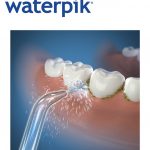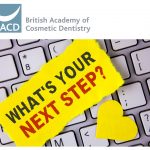According to a major international study, the Internet may be changing our brains. After reviewing evidence from dozens of studies and experiments, a global team of academics have proposed that the Internet could produce acute and sustained alterations in our attentional capabilities and memory processes.[1] It has been reported that the human attention span has shortened significantly in the last 15 years.[2] We have access to a constantly evolving stream of online information, notifications and prompts which divides our attention over multiple sources. The good news is that we seem to be better at multitasking but individuals that are constantly switching between short activities online, may have decreased capabilities when it comes to maintaining concentration on a single task. Furthermore, those affected show less grey matter in the cerebral areas of the brain associated with maintaining focus.1
As we know, the Internet provides a wealth of information at our fingertips and people have become reliant on it to gather information. Nevertheless, this could be affecting our memory. It seems that people no longer allocate cognitive resources towards remembering specific information so that it can recalled when it is needed. Instead, we make use of the Internet which acts as an external information storage and retrieval system, outstripping the capabilities of other resources such as books, colleagues and friends. Obviously, using this type of “cognitive offloading” for memory storage frees up the brain to benefit other areas or activities. However, it may affect our ability to remember facts. Moreover, some individuals fail to distinguish between their own capabilities and that of their devices, creating the illusion of “greater than actual knowledge” in a large proportion of the population.1
From a social point of view, people connect and communicate with friends and family over the Internet using email and video calling as well as social media platforms, online gaming and other virtual settings. Some may say, that this disengages us from the ‘real world’ yet we are living in a highly connected society. In fact, 87 per cent of all adults used the internet daily in 2019 and more than 8 out of 10 people accessed it “on the go”.[3] It is clear that the digital era is here to stay and technology is becoming ever more mainstream and sophisticated. Smart phones, on-demand TV, virtual assistants and cloud computing are the norm and the ‘Internet of Things’ (IoT) is set to revolutionise our lives further by connecting devices together and allowing us to quickly collate, monitor and analyse reams and reams of data. It is no surprise therefore, that we now expect constant, seamless connectivity with instant results and have no time for glitches. Indeed, our expectations have become higher and higher and surveys confirm that UK consumers are significantly more impatient now than they were five years ago.[4]
As far as dentistry is concerned, patients want fast, convenient services and solutions. The Internet means that people can gather information about dental treatments, services and products at the click of a button and they can read online reviews, refer to social media and shop around quickly to find the best options. Accordingly, dental technology has moved forward and digital equipment and software to enhance communication, streamline the workflow and reduce time and expense has been integrated into almost all areas of the industry. Dental professionals now have the ability to work with increased levels of accuracy and predictability using high performance equipment safely, efficiently and productively. For example, digital impressions are cleaner and more accurate than conventional impressions and digital x-ray machines produce high-resolution images that can be viewed instantly. Digital files can also be uploaded and shared directly with other dental professionals and the dental lab which allows for immediate feedback. Similarly, digital data and records can be stored, archived and recalled easily and efficiently.
Computer-aided design and computer-aided manufacturing (CAD/CAM) has also improved the design and fabrication of dental restorations, particularly dental protheses. Furthermore, milling operations have come into wider use and a more extensive range of dental materials is now required to fit into the digital workflow. In response to this and ever-increasing patient expectations, Solvay Dental 360® has developed Ultaire® AKP. This is a new generation, high performance polymer that has been custom-developed specifically for the manufacture of removable partial dentures (RPDs). Ultaire® AKP fits seamlessly into the digital workflow, which means that inaccuracies are reduced and production is streamlined. Also, Ultaire® AKP is lightweight but strong, biocompatible and completely metal-free so patients can benefit from RPDs with exceptional retention along with increased comfort and fit.
There is no denying that technology enhances our lives by making everyday tasks quicker and easier, services more efficient and industry more productive. In the dental sector, digital technology is enabling dental professionals to work in smarter ways than ever before achieving improved outcomes and increased patient satisfaction. As a result, it’s time to focus your attention on digital and get ready to meet the future of dentistry.
To book a Solvay Dental 360® Professional Lunch and Learn or to find more information about Ultaire® AKP and Dentivera® milling discs, please visit www.solvaydental360.com
Phillip Silver is the UK Country Manager and Consultant at Solvay Dental 360.™ He is a specialist in medical technologies and materials with over two decades of experience in both implantable and non-implantable devices. Phillip has worked in a range of clinical fields incorporating digital techniques and introducing new and novel technology into restorative dentistry, replacement and reconstructive surgery and facial plastics.
[1] Firth J. et al. The “online brain”: how the internet may be changing our cognition. World Psychiatry. 2019 Jun;18(2):119-129. https://www.ncbi.nlm.nih.gov/pmc/articles/PMC6502424/ [Accessed 7th January 2019]
[2] Bradbury N.A. et al. Attention span during lectures: 8 seconds, 10 minutes, or more? Adv Physiol Educ 40: 509–513, 2016. https://www.physiology.org/doi/pdf/10.1152/advan.00109.2016 [Accessed 7th January 2019]
[3] Office of National Statistics. Internet access – households and individuals, Great Britain: 2019. Released 12th August 2019. https://www.ons.gov.uk/peoplepopulationandcommunity/householdcharacteristics/homeinternetandsocialmediausage/bulletins/internetaccesshouseholdsandindividuals/2019 [Accessed 7th January 2019]
[4] Fetch. UK’s tech obsession has made us a ‘Fast and Furious’ nation. Research based on findings of a YouGov poll conducted between 19th -22nd May of 2,078 UK adults aged 18+. https://wearefetch.com/cms/content/media/2016/01/Instant-Gratification-research-release-FINAL.pdf [Accessed 7th January 2019]















